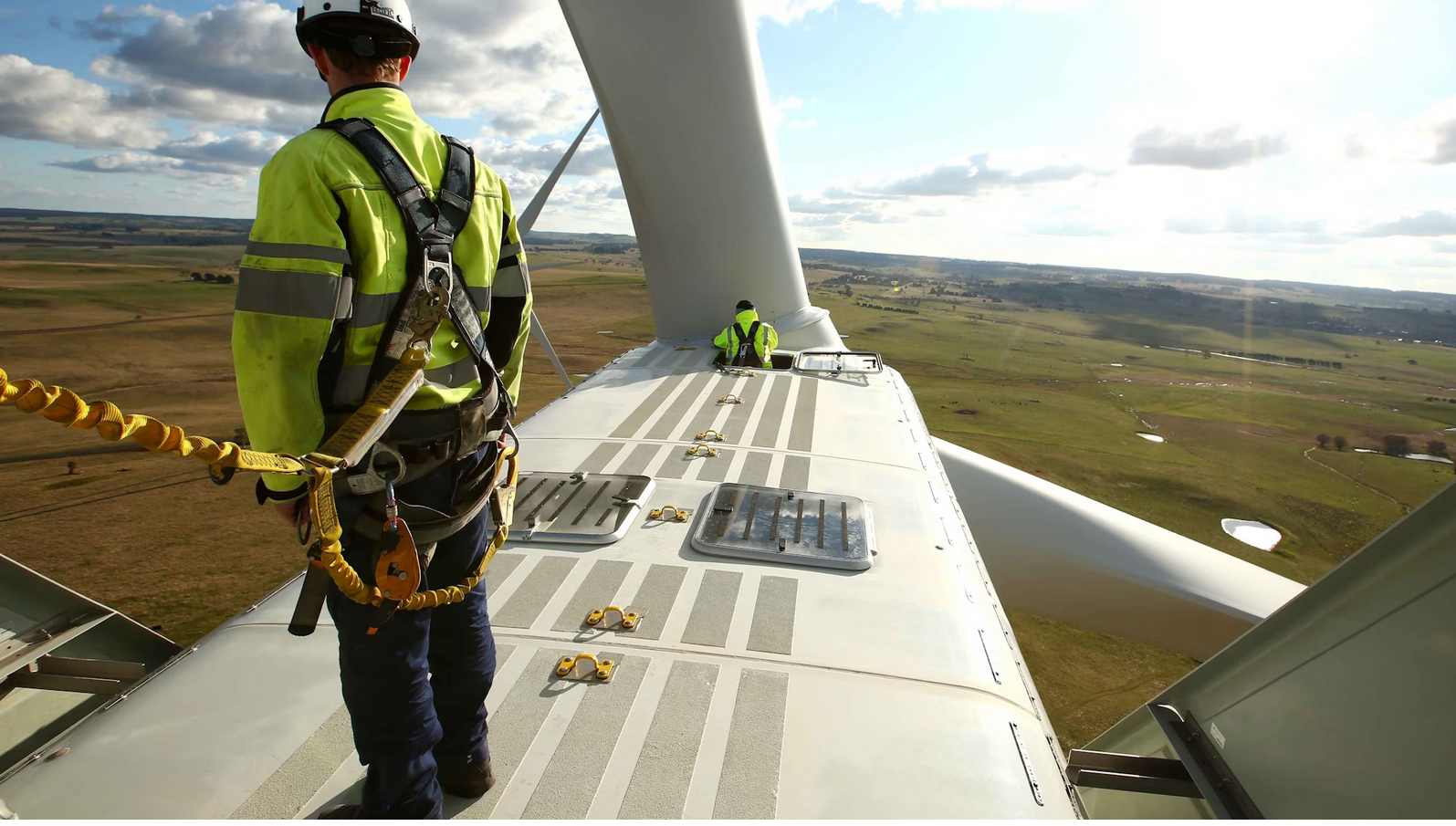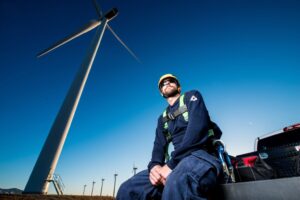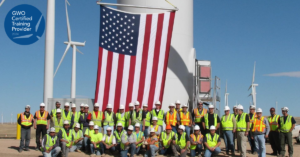Learn about what it takes to climb a wind turbine
Climbing a wind turbine is a specialized task that requires training, safety equipment, and adherence to strict protocols due to the height and complexity of the structures. Here’s how it is typically done:
1. Preparation and Training
- Certification: Workers must have the necessary certifications, such as Global Wind Organization (GWO) training, which covers working at heights, first aid, fire awareness, and manual handling.
- Health and Safety Checks: Climbers must undergo health checks to ensure they are fit for working at heights. Safety briefings and risk assessments are also conducted before any climb.
2. Personal Protective Equipment (PPE)
- Harness and Fall Arrest System: Workers wear a full-body harness attached to a fall arrest system. This system includes a lanyard or self-retracting lifeline connected to an anchor point on the turbine.
- Helmet and Gloves: A safety helmet protects against head injuries, and gloves provide a secure grip while climbing.
- Climbing Suit and Footwear: A climbing suit, often flame-resistant, and sturdy, non-slip boots are worn to protect against environmental hazards and ensure a good grip.
3. Climbing the Turbine
- Internal Ladder: Most wind turbines have an internal ladder running up the tower. This ladder is equipped with a vertical safety rail or cable system to which climbers attach their fall arrest lanyard.
- Climbing in Stages: Climbers typically ascend in stages, resting at intermediate platforms. These platforms also serve as emergency exit points in case of fatigue or other issues.
- Self-Retracting Lifeline: This device automatically adjusts the length of the lanyard, preventing slack and minimizing the risk of falling.
4. Using the Elevator (If Available)
- Service Lifts: Some wind turbines are equipped with service lifts (small elevators) that can carry workers part or all of the way up the tower, reducing the physical strain of climbing.
- Lift Safety Protocols: When using the lift, workers must adhere to safety protocols, including checking the lift’s condition and following weight limits.
5. Reaching the Nacelle
- Final Ascent: The last part of the climb may involve transitioning from the internal ladder to access the nacelle, the housing that contains the gearbox, generator, and other critical components.
- Securing in Place: Once at the nacelle, workers secure themselves with additional lanyards to ensure they remain safely tethered while performing tasks.
6. Working in the Nacelle and on the Blades
- Confined Space Procedures: The nacelle can be a confined space, requiring specific procedures to ensure safe movement and ventilation.
- Blade Access: For work on the blades, technicians may use rope access techniques, hanging from the nacelle, or they might use platforms or cranes for maintenance tasks.
- Continuous Monitoring: Workers remain in constant communication with the ground team, and their condition is monitored to ensure safety.
7. Descent
- Controlled Descent: After completing their work, climbers carefully descend using the same ladder or lift system, ensuring they remain attached to the fall arrest system at all times.
- Emergency Descent: In case of an emergency, climbers can use an emergency descent device that allows them to rappel down the tower safely.
8. Post-Climb Procedures
- Equipment Check: After the climb, workers inspect their equipment for any damage and ensure it is in good condition for future use.
- Reporting and Debriefing: Workers complete any necessary reports and participate in a debriefing to discuss any issues encountered during the climb and ensure continuous safety improvements.
Safety Considerations
- Wind Conditions: Climbing is typically restricted or halted in high winds or severe weather conditions, as these can make the climb more dangerous.
- Emergency Preparedness: Workers are trained in emergency procedures, including self-rescue and the use of emergency descent devices.
- Regular Training: Regular refreshers in safety protocols and climbing techniques are necessary to keep certifications current and ensure safety standards are maintained.
Climbing a wind turbine is a highly skilled task that prioritizes safety at every step, from preparation and equipment to the climb itself and subsequent descent.
Book a Course
Interested in world-class training for working on wind turbines? Click the button to book your next course.




